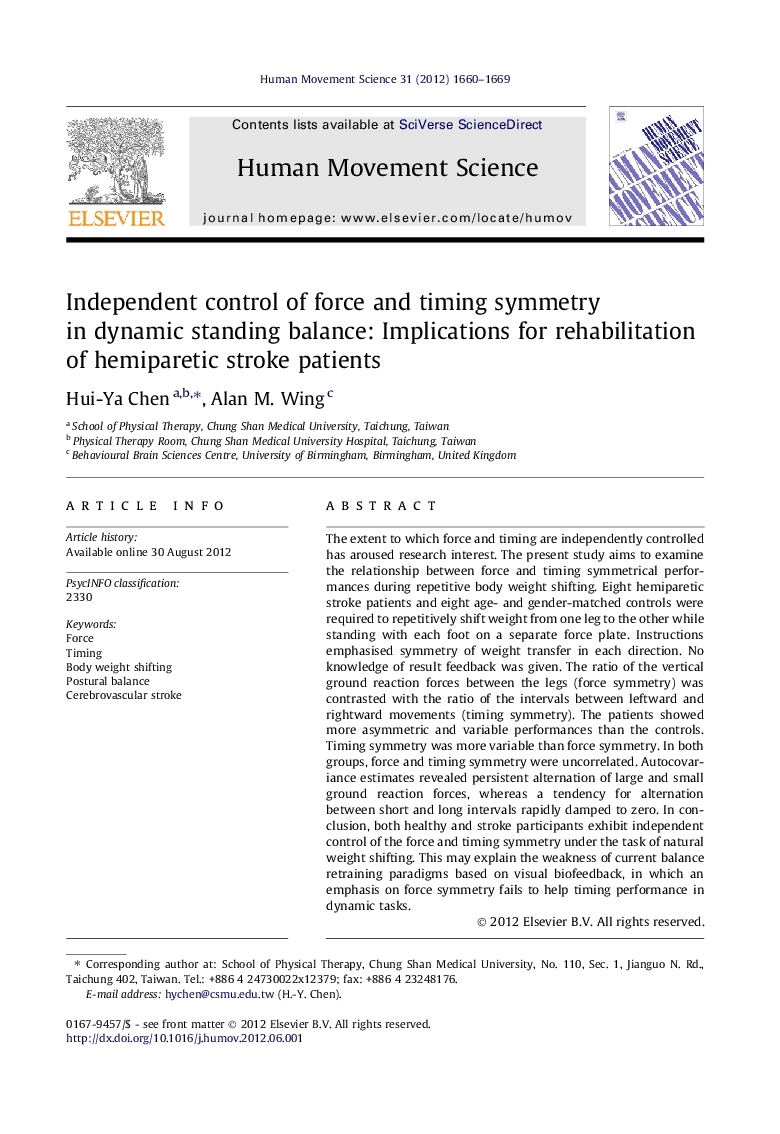| Article ID | Journal | Published Year | Pages | File Type |
|---|---|---|---|---|
| 928525 | Human Movement Science | 2012 | 10 Pages |
The extent to which force and timing are independently controlled has aroused research interest. The present study aims to examine the relationship between force and timing symmetrical performances during repetitive body weight shifting. Eight hemiparetic stroke patients and eight age- and gender-matched controls were required to repetitively shift weight from one leg to the other while standing with each foot on a separate force plate. Instructions emphasised symmetry of weight transfer in each direction. No knowledge of result feedback was given. The ratio of the vertical ground reaction forces between the legs (force symmetry) was contrasted with the ratio of the intervals between leftward and rightward movements (timing symmetry). The patients showed more asymmetric and variable performances than the controls. Timing symmetry was more variable than force symmetry. In both groups, force and timing symmetry were uncorrelated. Autocovariance estimates revealed persistent alternation of large and small ground reaction forces, whereas a tendency for alternation between short and long intervals rapidly damped to zero. In conclusion, both healthy and stroke participants exhibit independent control of the force and timing symmetry under the task of natural weight shifting. This may explain the weakness of current balance retraining paradigms based on visual biofeedback, in which an emphasis on force symmetry fails to help timing performance in dynamic tasks.
► We studied force and timing symmetry during repetitive body weight shifting. ► Force and timing symmetry are controlled independently in the dynamic balance task. ► An auditory biofeedback or split-belt treadmill may be applied for hemiparetic balance retraining.
